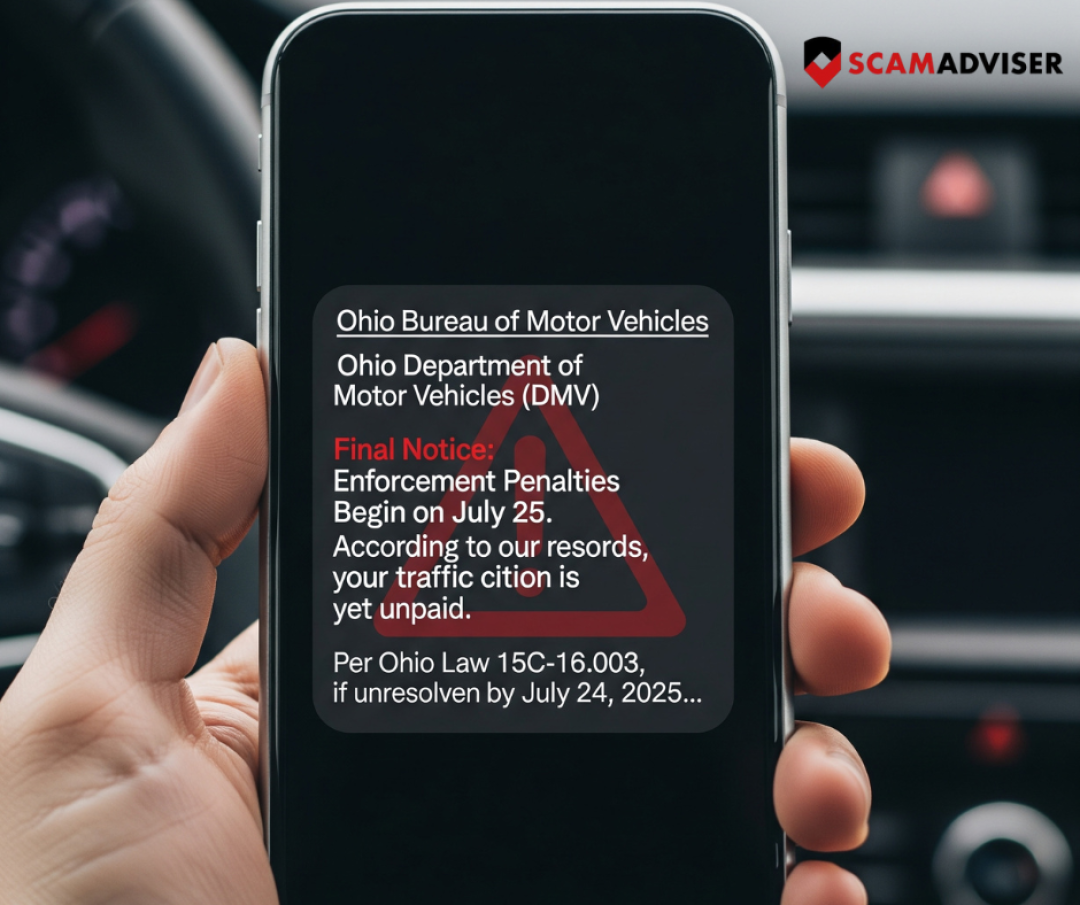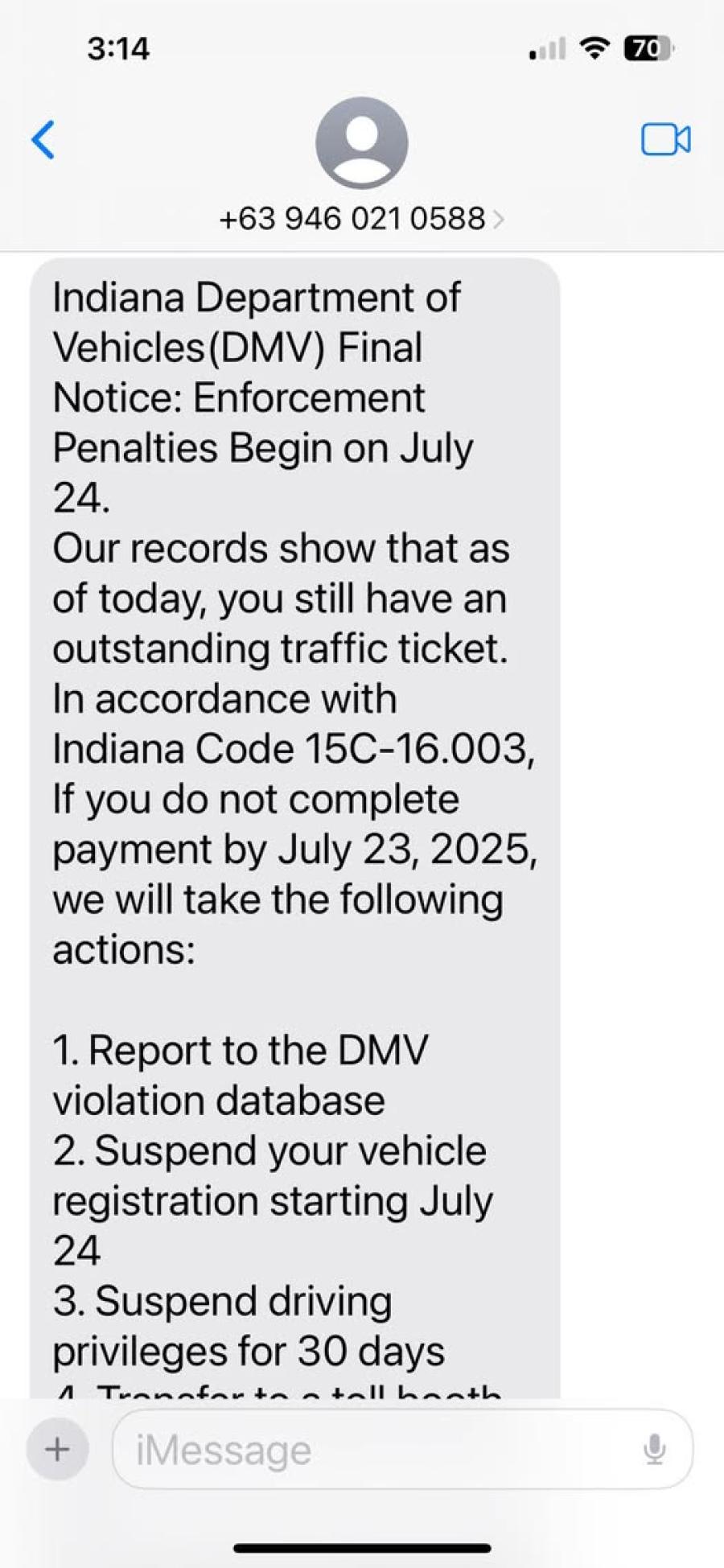DMV & Toll Road SMS Scams Are Flooding Phones—Here’s Why

Author: Adam Collins
Scammers have found a new way to exploit something most people don’t think twice about: toll fees.
Across the U.S., people are receiving text messages claiming they owe money for unpaid tolls. These messages often appear to come from the Department of Motor Vehicles (DMV) or state tolling agencies, and they include links that look official. But they’re fake—and designed to steal your money or personal information.
The rise of DMV text scams is no coincidence. With more people shopping online, driving across states, and trusting mobile alerts, fraudsters are using everyday habits as cover for increasingly convincing SMS scams.
So what’s driving this surge in fake toll road and DMV messages? Let’s unpack what’s happening, how these scams work, and—most importantly—how you can stay safe.
Why Toll SMS and DMV Text Scams Are Exploding in 2025
Scammers follow behavior. And what are people doing more of these days?
Online shopping, interstate travel, rideshares, and gig work—all of which rely heavily on toll roads and deliveries.
That’s what makes fake toll messages so effective: they feel timely and believable.
But it’s not just a hunch. Recent scam data shows a sharp rise in these fake toll payment messages, with reports surging across states like Oregon, New York, and Florida. And many of these messages claim to come from the DMV or local transport authorities.

Example of a DMV Text Scam
Scammers are cashing in on:
- Confusion around new toll systems
- Public trust in DMV or DOT messaging
- Urgency created by “immediate fine” language
- Sophisticated phishing links that mimic real state websites
The result? Thousands of people are clicking fraudulent links, handing over credit card details, and unknowingly signing up for subscription billing scams or malware downloads.
How DMV Text Scams Work
At first glance, a scam text may look like it’s from your local DMV or toll road service. It typically includes:
- Your state abbreviation (e.g., “NY DMV” or “OR Toll Services”)
- A warning about unpaid tolls or registration issues
- A shortened link (e.g., bit.ly/tollalert456) or one mimicking an official domain
But behind the scenes, these links often redirect users to phishing sites or install malware on the phone. Some messages even trigger fake two-factor verifications to steal your credentials.
Even Non-Drivers Are Being Targeted
One of the scariest things about toll scams is that they don’t just hit drivers. Scammers send these texts to everyone, regardless of whether you own a car, drive on toll roads, or even have a driver’s license.
In 2024 alone, the Federal Trade Commission received nearly 247,000 reports of scam texts. Combined losses were estimated at $470 million. The FBI also received over 60,000 complaints related specifically to toll and DMV scams. That shows how widespread and effective these scams have become.
How to Recognize a Toll Scam Text
So how can you tell a fake message from the real thing? Here are some common red flags:
- The message comes from a strange or international phone number
- It uses generic greetings like “Dear driver” or “E-ZPass user”
- There are grammar mistakes or unusual phrasing
- The link looks odd, with strange domain names like “.top” or “.vip”
- It asks for unusual payment methods like gift cards, crypto, or wire transfers
- It threatens immediate consequences if you don’t pay now

Another example of Toll Scam
Real toll agencies and DMVs don’t do any of this. They won’t text you out of nowhere demanding payment. They don’t use fear tactics, and they certainly don’t ask you to pay via suspicious links or non-standard methods.
How States Are Responding to Toll Text Scams
These scams have gotten so bad that state governments and toll agencies across the country are issuing warnings. In places like New York, Florida, California, Texas, Virginia, Illinois, and Georgia, officials have made it clear that they do not send random texts about toll violations or payments.
For example, the Florida SunPass system has emphasized that it never asks for personal info via text or email. California’s FasTrak and The Toll Roads have stated they only communicate through secure, user-registered portals. E-ZPass in New York has warned users not to click any text links and to report suspicious activity immediately.
This is a nationwide issue. It affects all types of toll systems, including:
- E-ZPass (East Coast, New York, New Jersey, Pennsylvania)
- SunPass (Florida)
- FasTrak (California)
- Good To Go! (Washington)
- EZDriveMA (Massachusetts)
- TxTag (Texas)
- Peach Pass (Georgia)
Scammers are copying all of them. If your state has a toll system, chances are someone’s trying to impersonate it.
What You Should Do If You Get a DMV Scam Text
If you receive a suspicious toll-related text, follow these steps:
- Don’t click any links
- Don’t reply to the message
- Take a screenshot if you want to report it
- Delete the message from your phone
- Report it by forwarding it to 7726 (SPAM)
You can also report the scam to the FBI’s Internet Crime Complaint Center at ic3.gov or the FTC at reportfraud.ftc.gov.
If you’re ever in doubt about whether a toll message is real, go directly to the agency’s website by typing it into your browser—don’t use the link from the text. Look for official websites with .gov domains or confirmed customer service portals.
What to Do If You Already Clicked a Text Scam
If you think you’ve fallen for the scam—clicked the link, submitted information, or made a payment—act quickly:
- Contact your bank or credit card provider and report the fraud
- Freeze or cancel your card if necessary
- Change your passwords, especially for online toll accounts or DMV logins
- Place a fraud alert or credit freeze with credit bureaus (Equifax, Experian, TransUnion)
- Report identity theft at IdentityTheft.gov
Even if you didn’t lose money, you could still be at risk of identity theft. Keep an eye on your credit, and consider enrolling in credit monitoring if you suspect your personal information was compromised.
Bottom Line: Avoiding Toll SMS Scams
Toll SMS scams are a real and growing threat. They’re not just annoying spam—they’re a well-oiled operation designed to steal your money, your identity, or both.
These scams work because they’re sneaky, personalized, and emotionally manipulative. But they can be defeated with a little knowledge and caution.
Don’t trust random messages. Don’t click unknown links. And always double-check directly with your local DMV or toll agency before taking action.
When in doubt, pause. Verify. Then act.
The more we understand how these scams work, the harder it becomes for scammers to succeed.
Before you click, check with ScamAdviser.com—it’s a quick way to verify websites, phone numbers, crypto wallets, and even IBANs. On mobile? No worries—the ScamAdviser app has you covered 24/7, keeping you safer wherever you browse.
Report a Scam!

Have you fallen for a hoax, bought a fake product? Report the site and warn others!
Scam Categories
Help & Info
Popular Stories
As the influence of the internet rises, so does the prevalence of online scams. There are fraudsters making all kinds of claims to trap victims online - from fake investment opportunities to online stores - and the internet allows them to operate from any part of the world with anonymity. The ability to spot online scams is an important skill to have as the virtual world is increasingly becoming a part of every facet of our lives. The below tips will help you identify the signs which can indicate that a website could be a scam. Common Sense: Too Good To Be True When looking for goods online, a great deal can be very enticing. A Gucci bag or a new iPhone for half the price? Who wouldn’t want to grab such a deal? Scammers know this too and try to take advantage of the fact. If an online deal looks too good to be true, think twice and double-check things. The easiest way to do this is to simply check out the same product at competing websites (that you trust). If the difference in prices is huge, it might be better to double-check the rest of the website. Check Out the Social Media Links Social media is a core part of ecommerce businesses these days and consumers often expect online shops to have a social media presence. Scammers know this and often insert logos of social media sites on their websites. Scratching beneath the surface often reveals this fu
So the worst has come to pass - you realise you parted with your money too fast, and the site you used was a scam - what now? Well first of all, don’t despair!! If you think you have been scammed, the first port of call when having an issue is to simply ask for a refund. This is the first and easiest step to determine whether you are dealing with a genuine company or scammers. Sadly, getting your money back from a scammer is not as simple as just asking. If you are indeed dealing with scammers, the procedure (and chance) of getting your money back varies depending on the payment method you used. PayPal Debit card/Credit card Bank transfer Wire transfer Google Pay Bitcoin PayPal If you used PayPal, you have a strong chance of getting your money back if you were scammed. On their website, you can file a dispute within 180 calendar days of your purchase. Conditions to file a dispute: The simplest situation is that you ordered from an online store and it has not arrived. In this case this is what PayPal states: "If your order never shows up and the seller can't provide proof of shipment or delivery, you'll get a full refund. It's that simple." The scammer has sent you a completely different item. For example, you ordered a PlayStation 4, but instead received only a Playstation controller. The condition of the item was misrepresented on the product page. This could be the